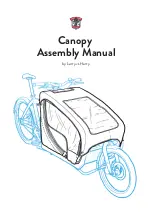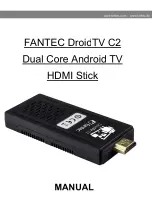
2
INDEX
Page
OWNER’S INFORMATION ............................................................................................................................................................. 2
GENERAL SPECIFICATIONS ........................................................................................................................................................ 3
GENERAL RULES FOR A CORRECT OVERHAULING AND MAINTENANCE ............................................................................ 3
SPECIFIC TOOLS .......................................................................................................................................................................... 4
FAILURES, CAUSES AND REMEDIES ......................................................................................................................................... 4
RECOMMENDATIONS FOR USE .................................................................................................................................................. 5
INSTALLATION ............................................................................................................................................................................... 5
ADJUSTMENTS .............................................................................................................................................................................. 5
DISASSEMBLY ............................................................................................................................................................................... 6
DISASSEMBLY DIAGRAM ............................................................................................................................................................. 6
REASSEMBLY .............................................................................................................................................................................. 11
FORK EXPLODED VIEW ............................................................................................................................................................. 15
The figures and descriptions in this pamphlet are provided as a guide.
We reserve the right to make changes to the products without notice in line with our policy of continuous improvement.
Always respect Nature when riding !
OWNER'S INFORMATION
IMPORTANT: Installing a Marzocchi suspension system is a very delicate operation that must be carried out with extreme care. These installation
and maintenance instructions are designed for experienced bicycle mechanics and must be followed exactly as written and
specified. Failure to precisely follow these instructions could cause damage to one or more components of the Marzocchi
suspension system. This damage may not be readily visible or apparent and could lead to unexpected failure on one or more
components of your suspension to such extent that the rider may loose control of the bicycle and suffer severe injury.
The responsibility of the owner
1) The Marzocchi suspension system is designed to absorb the shocks of an uneven road surface in order to give the rider more control over this
bicycle. It is not designed to absorb the forces generated by jumps or other acrobatic maneuvers. If you subject the Marzocchi suspension system
to repeated jumps or other acrobatic maneuvers, you could cause one or more of the components of the suspension system to unexpectedly
break, resulting in a loss of bicycle control and serious injury to the rider.
2) Some of the parts of the bicycle, such as the brakes, steering, tires, wheel assembly and shifters may not have been adjusted at the time the
Marzocchi suspension system was installed on the bicycle. Before you ride the bicycle, be sure all the parts of the bicycle were properly adjusted
and functioning properly.
3) All of the components of the suspension system must be correctly assembled and tightened exactly to the specified torque values. Periodically
check the torque of these components to insure that they are correct. Failure to properly assemble and tighten the components could cause one
or more of the components to unexpectedly break, resulting in a loss of bicycle control and serious injury to the rider.
4) There are obvious risks associated with mountain biking and other types of bicycle riding. Despite the use of all safety equipment for the bicycle
and the rider, either injuries or damages may occur. This is the responsibility of the rider. To reduce the risk of injury, all activities must be under
proper supervision and only after proper training and experience. Good physical condition of the rider and the good state of the bicycle are
essential to be a safe and successful rider.
5) Be sure to read and follow all the instructions and warnings which originally accompanied your bicycle. In addition, it is recommended for added
safety and protection while riding that a good quality bicycle helmet be worn and that other safety devices such as lights, reflectors, or reflective
clothing be used. Some cities and states may require the use of a helmet and other safety equipment. Follow all traffic rules and all other laws
about safety equipment and use your bicycle where you are permitted to ride.
6) For any further information you might need, please call or write to this addresses:
LARM
Via Ca’ dell’Orbo, 36 -
40055 Villanova di Castenaso (Bologna) - Italy
☎
++51/6053460 - Fax ++51/6053411
MSC CORPORATION USA
28231 Avenue Crocker - Unit 100
VALENCIA CA, 91355
☎
+1 (805) 257-6630 - Fax +1 (805) 257-6636
It is your responsibility to make sure the assembly instructions in this book are precisely followed.
Always ride safely and carefully.

































